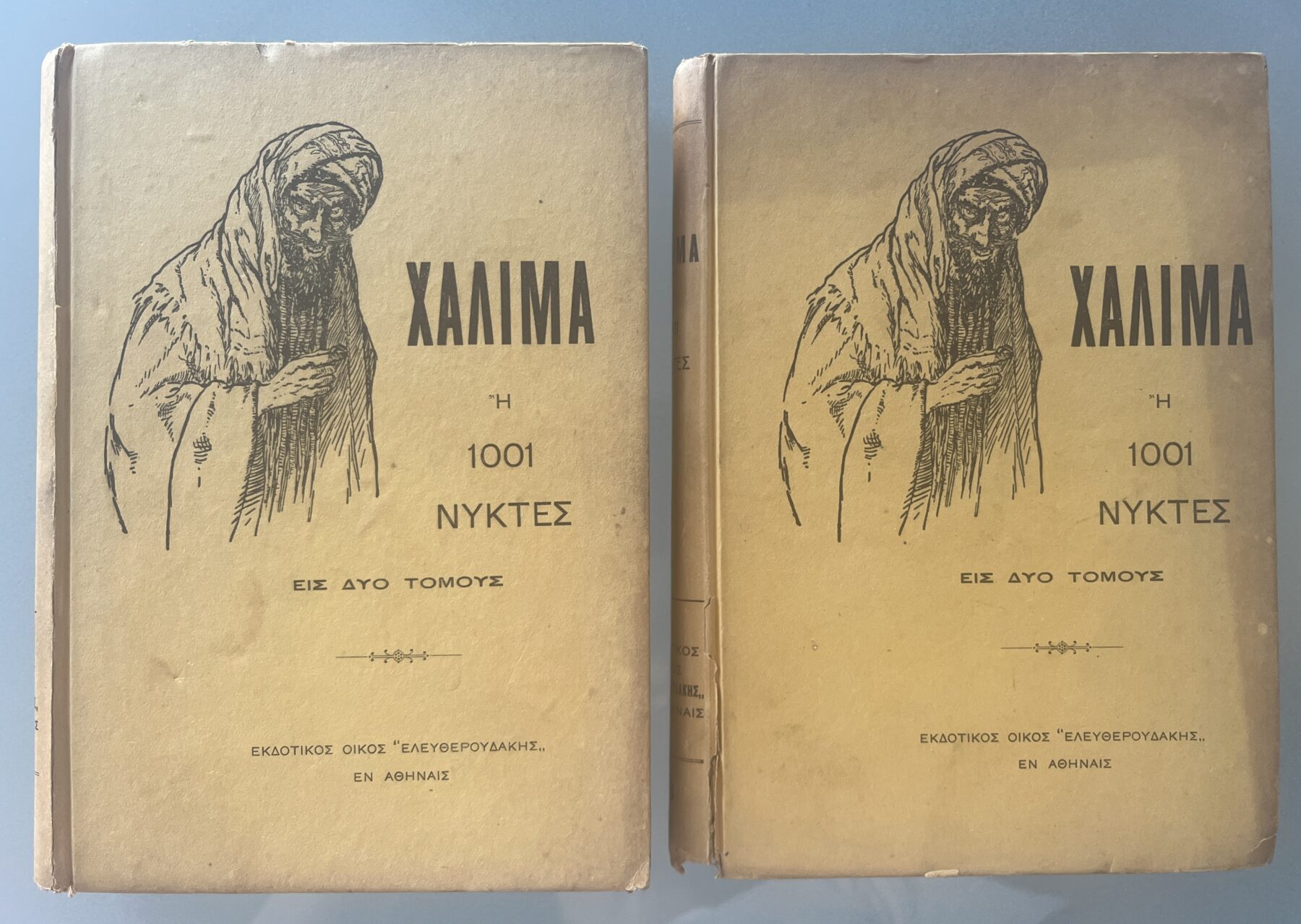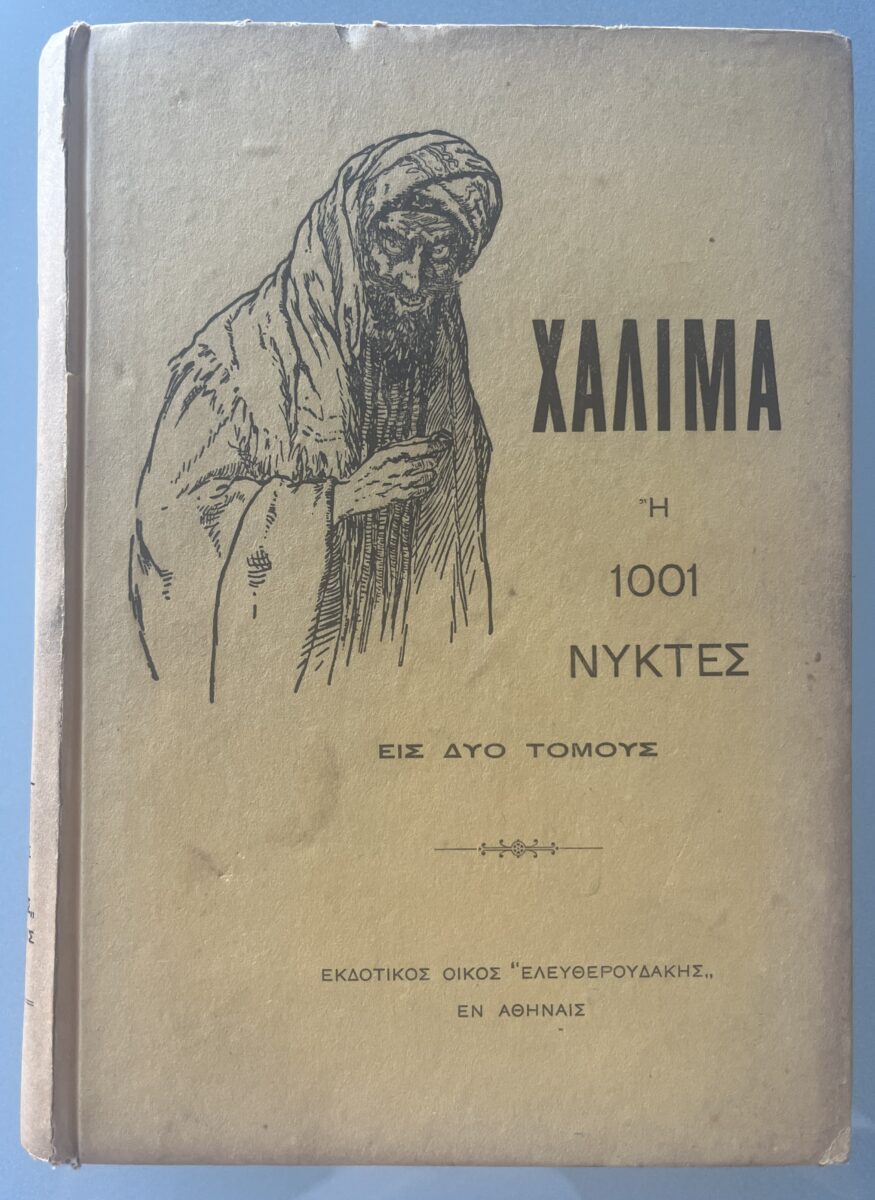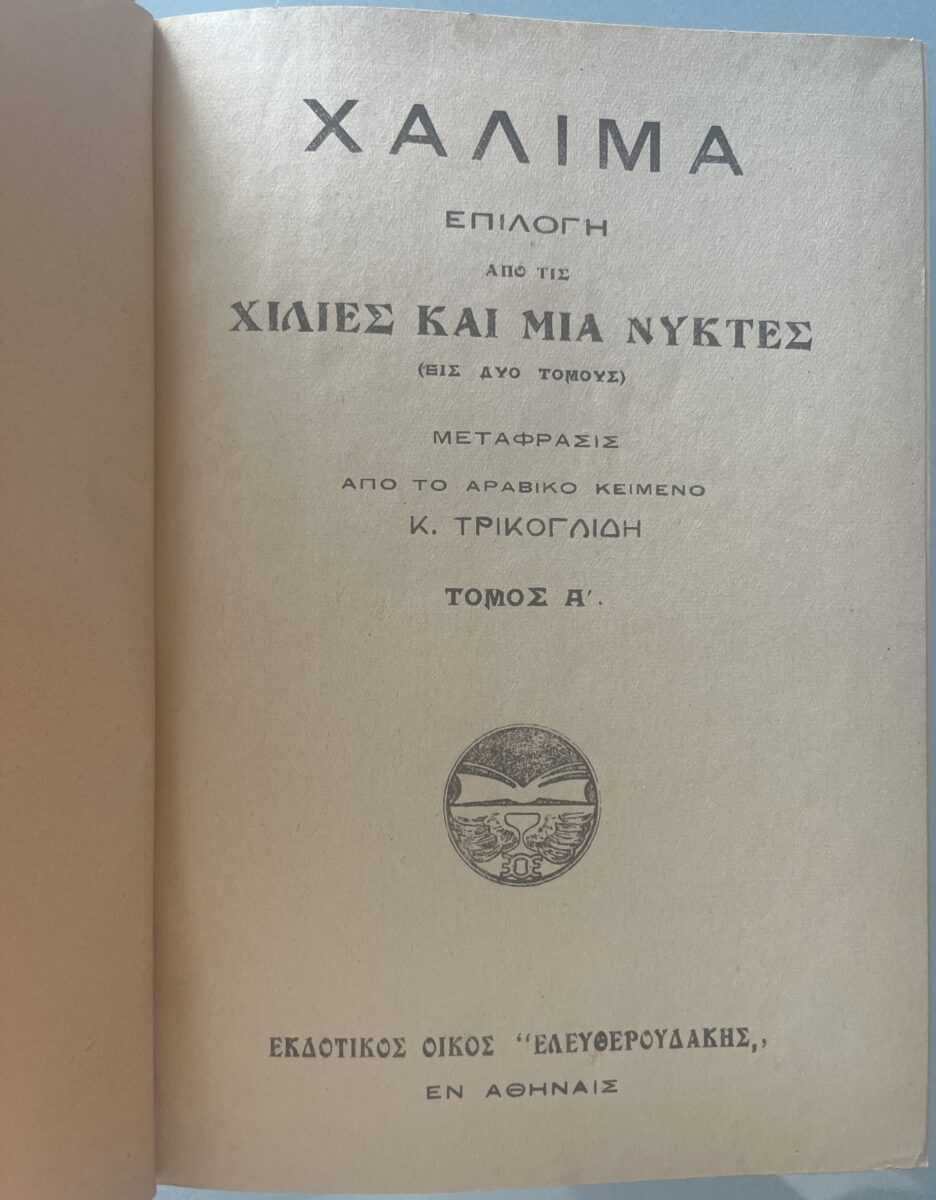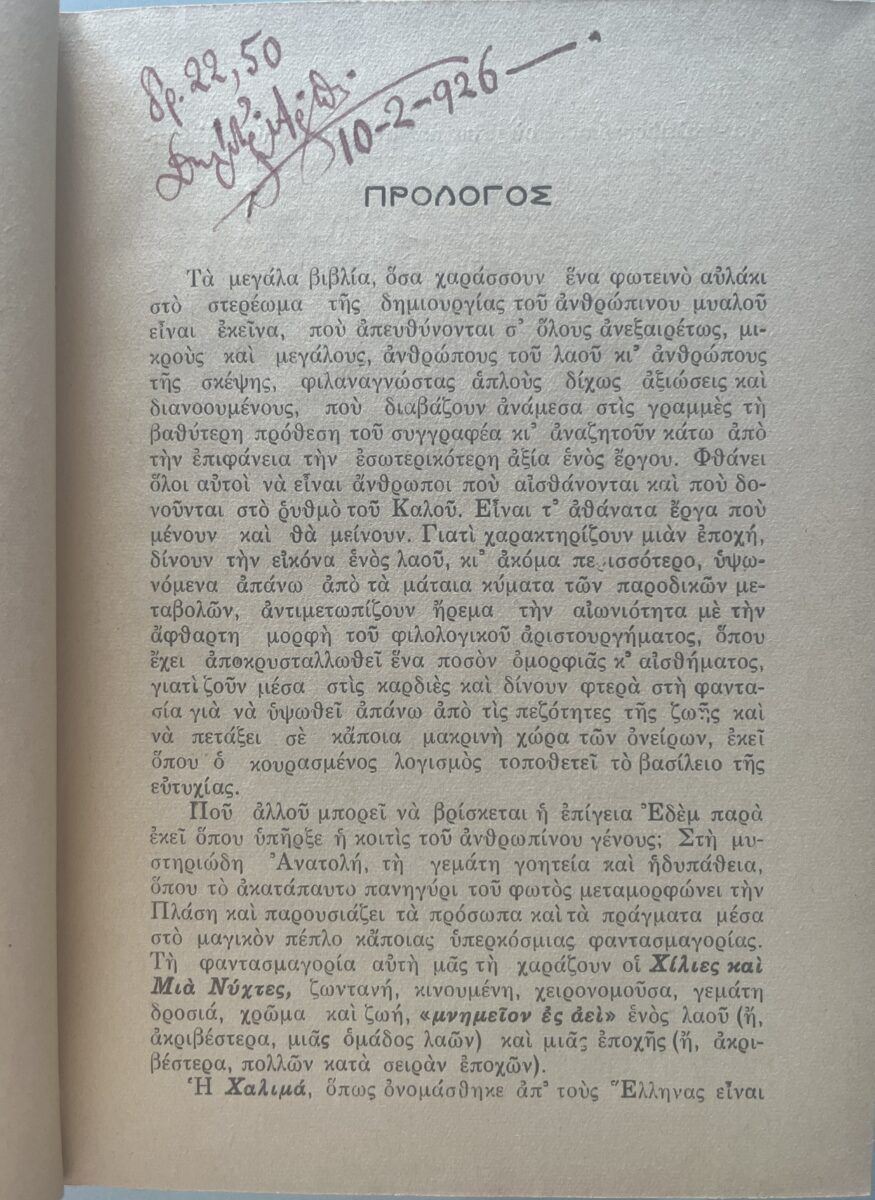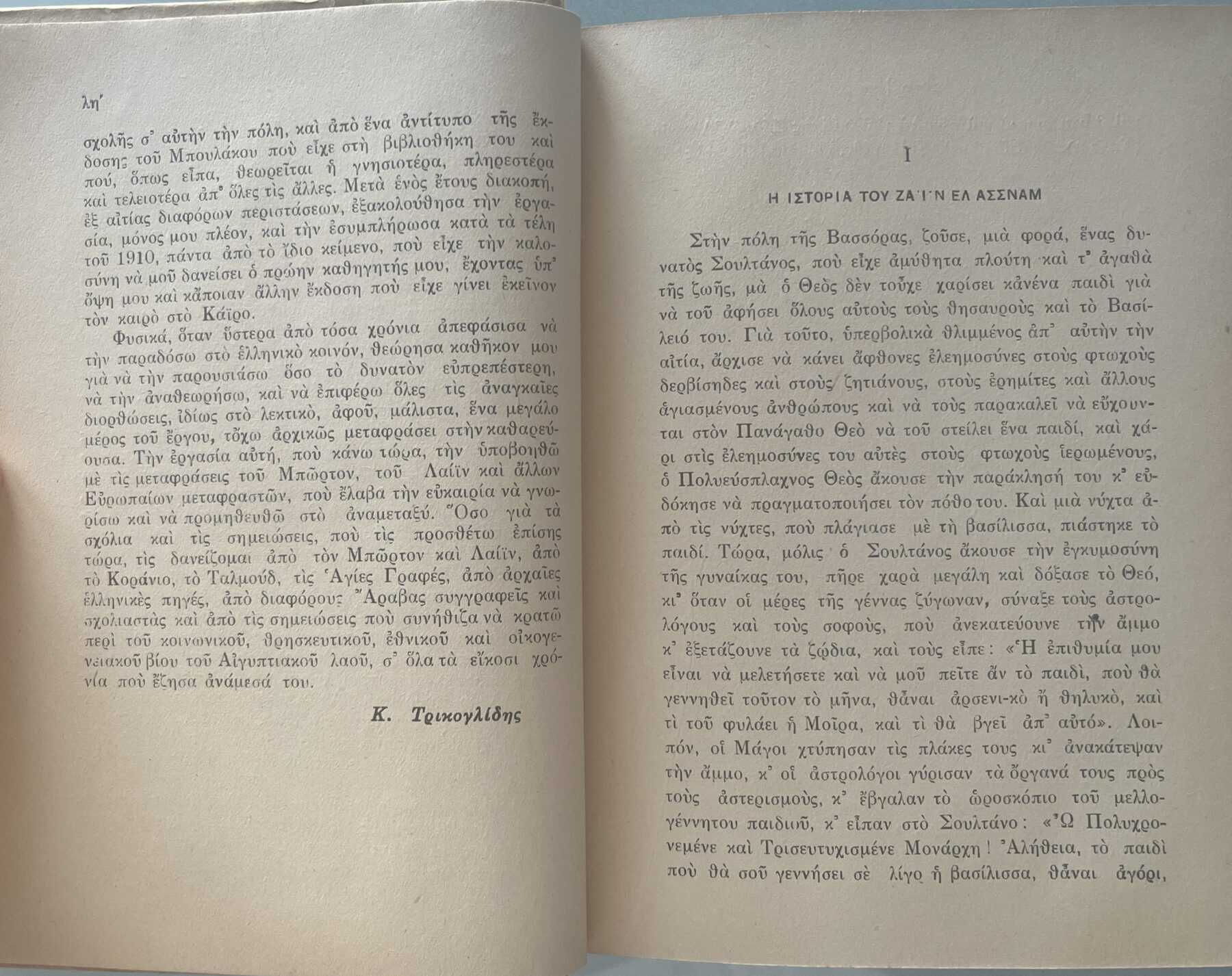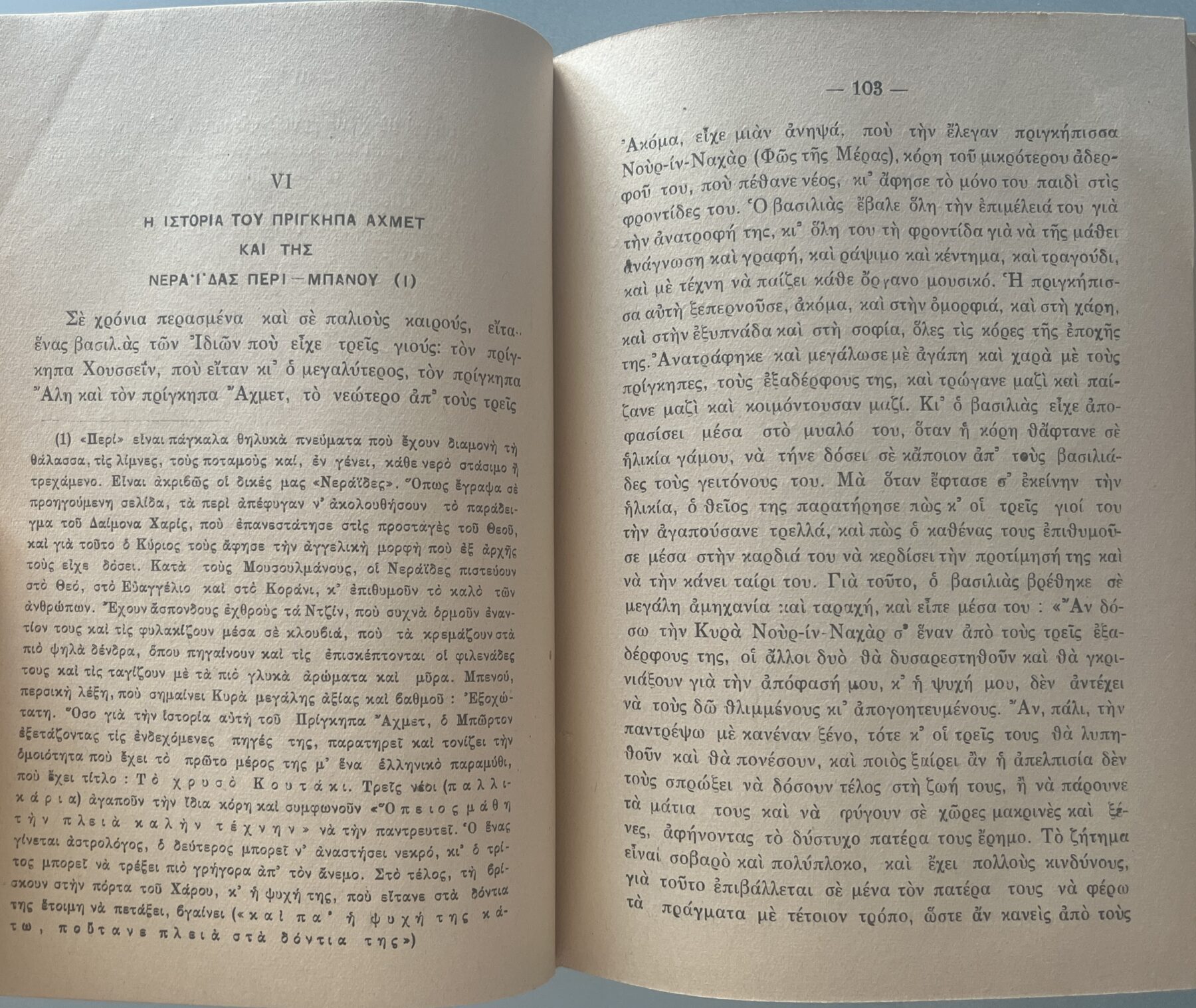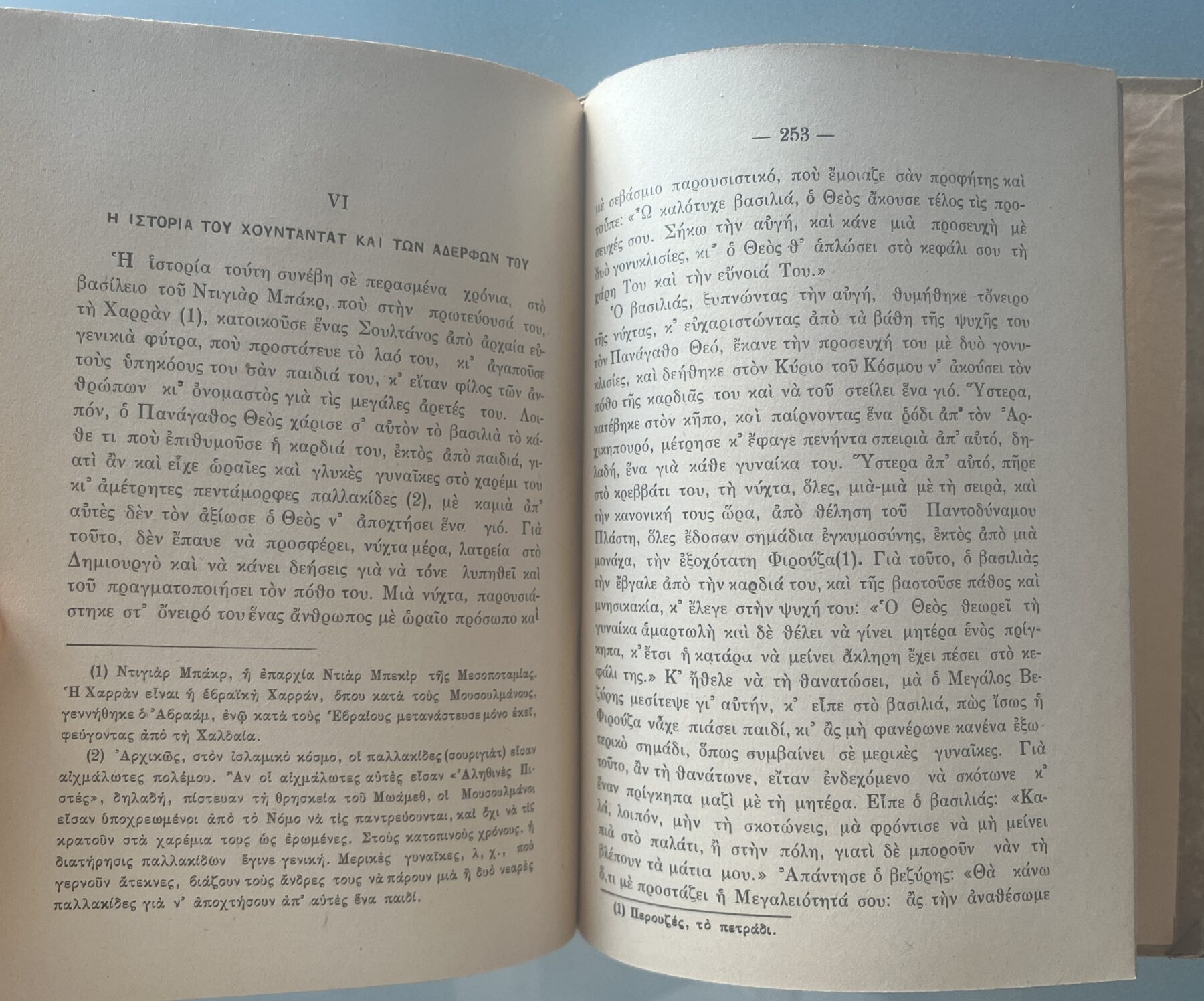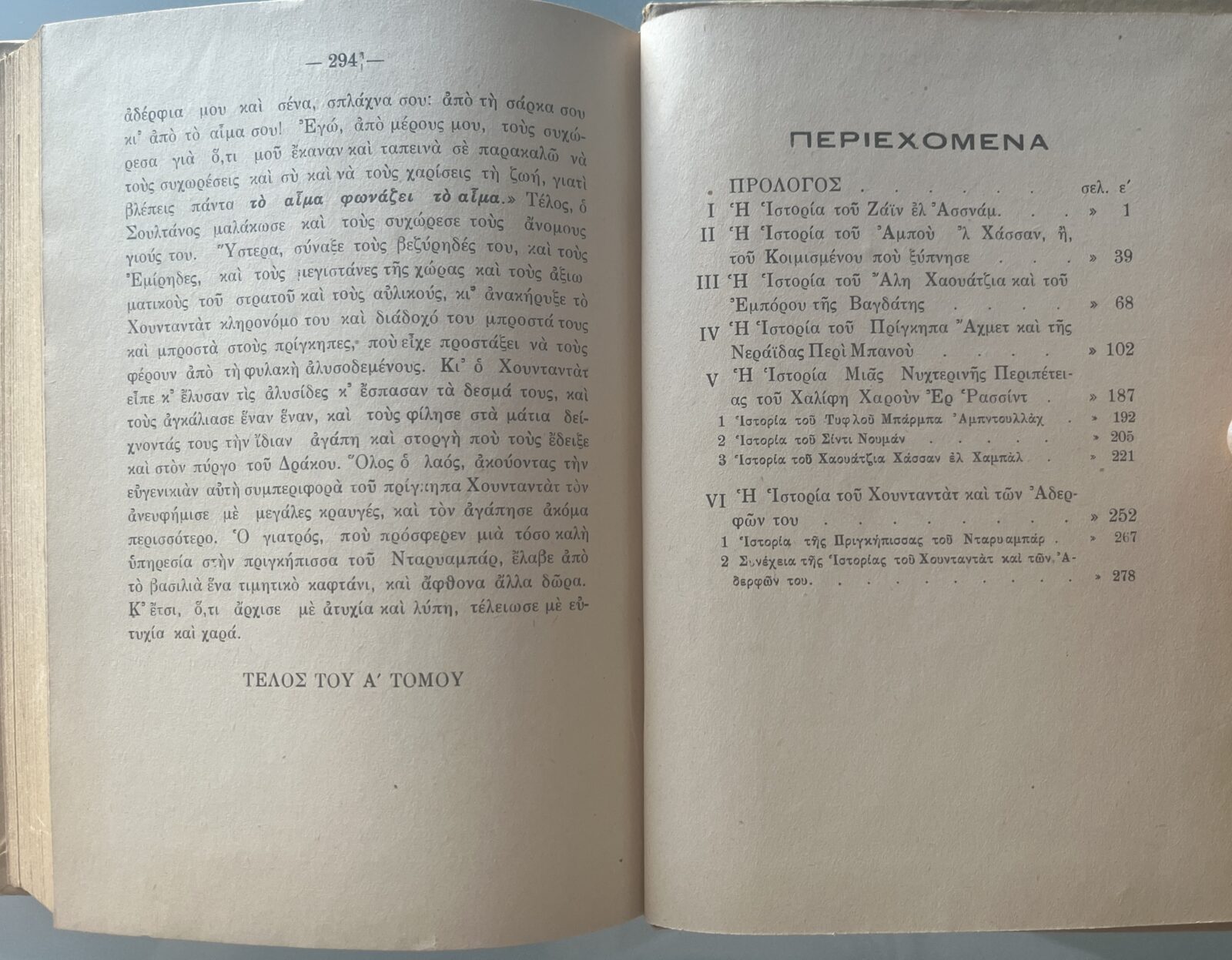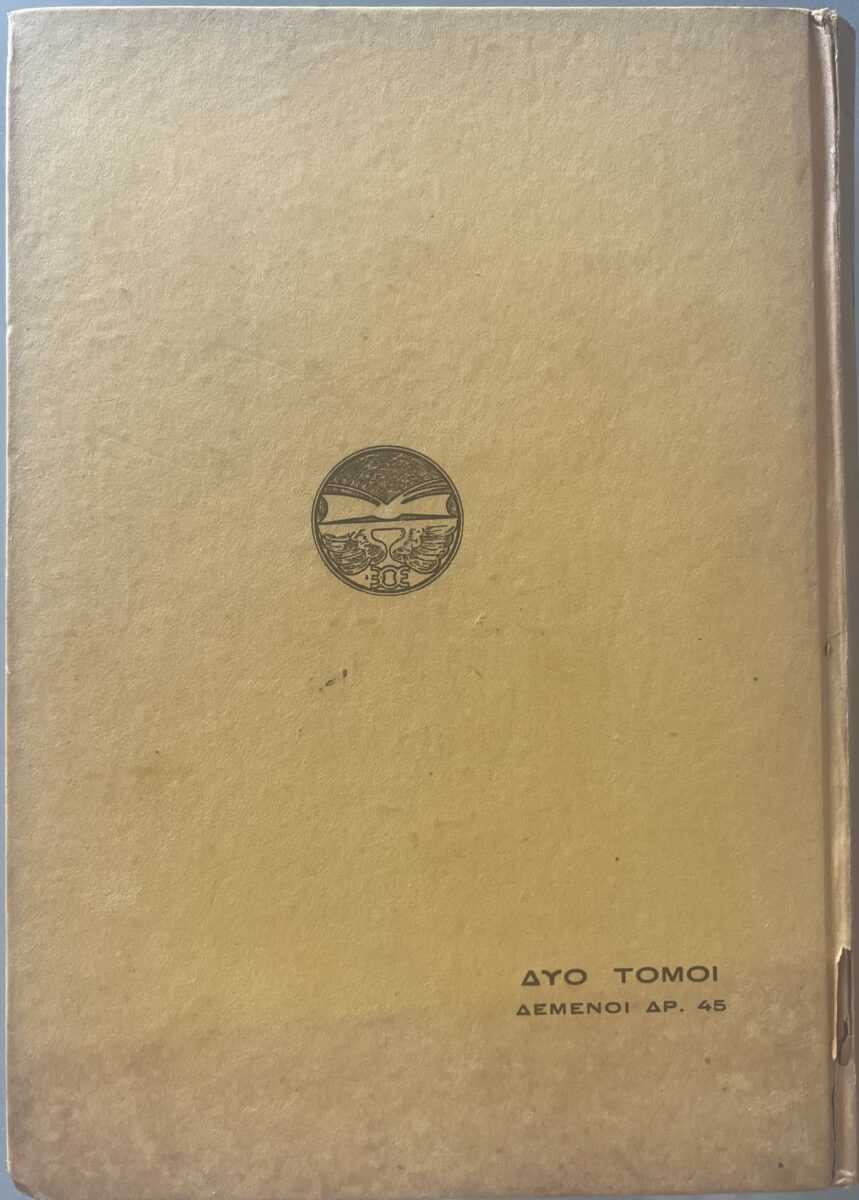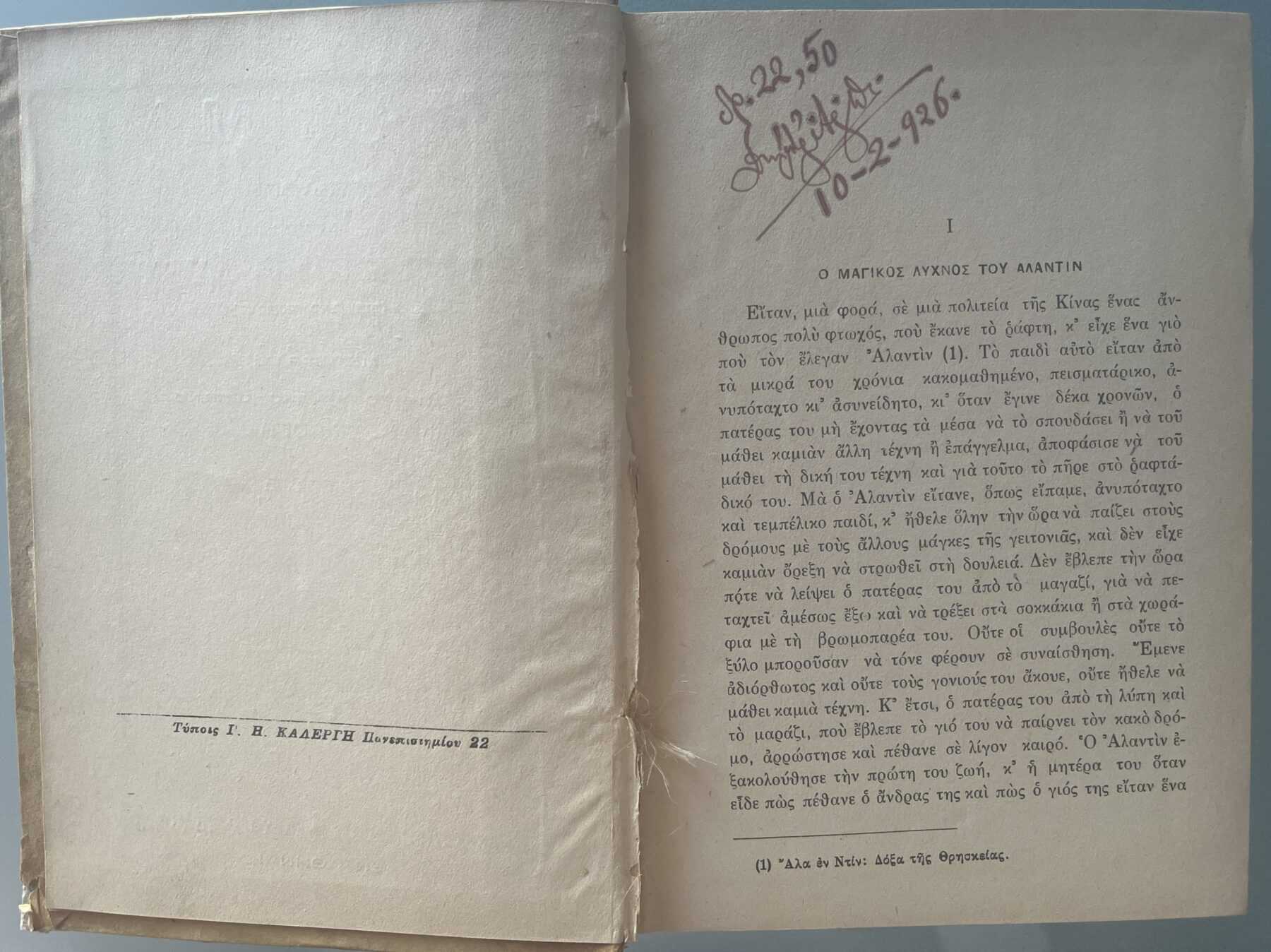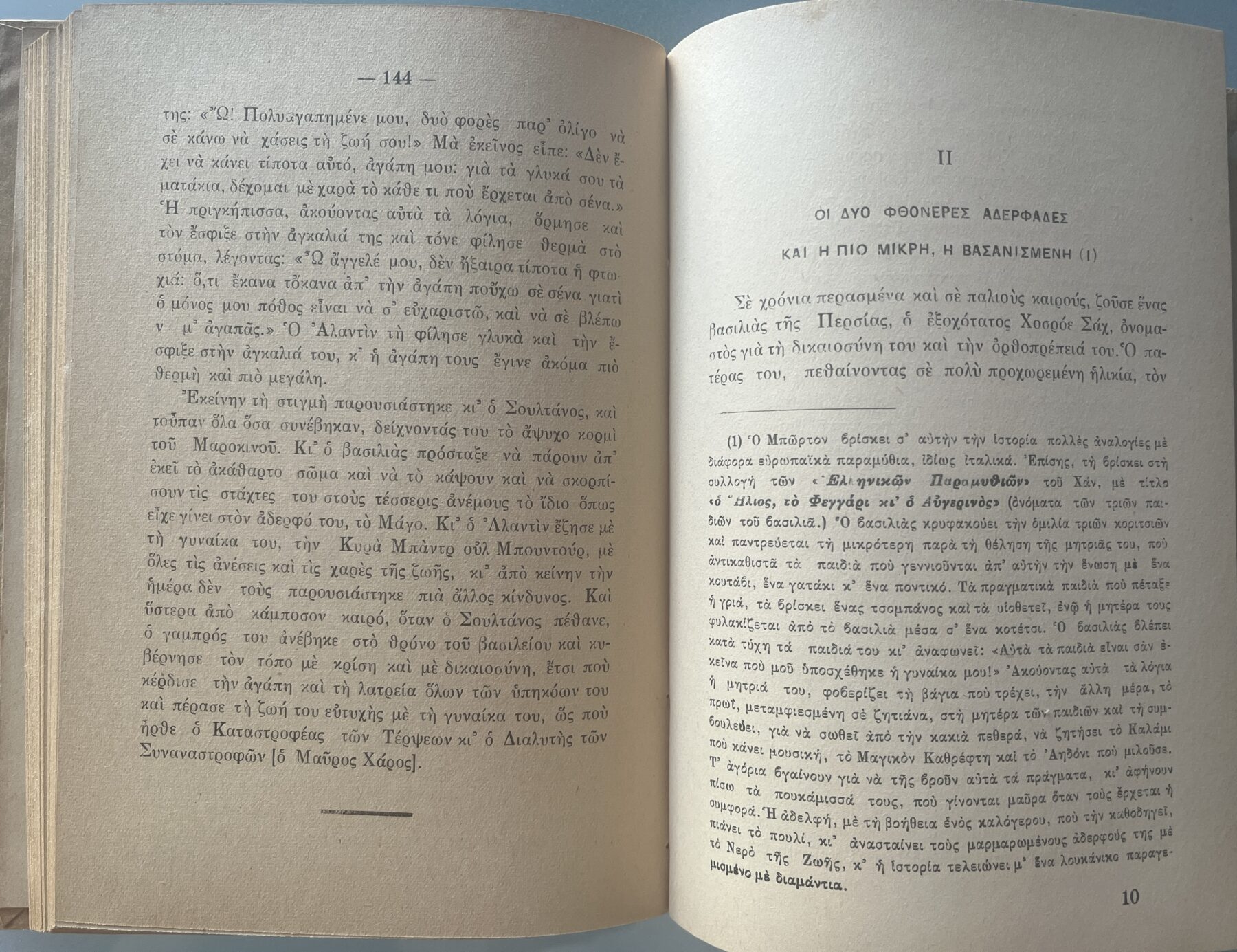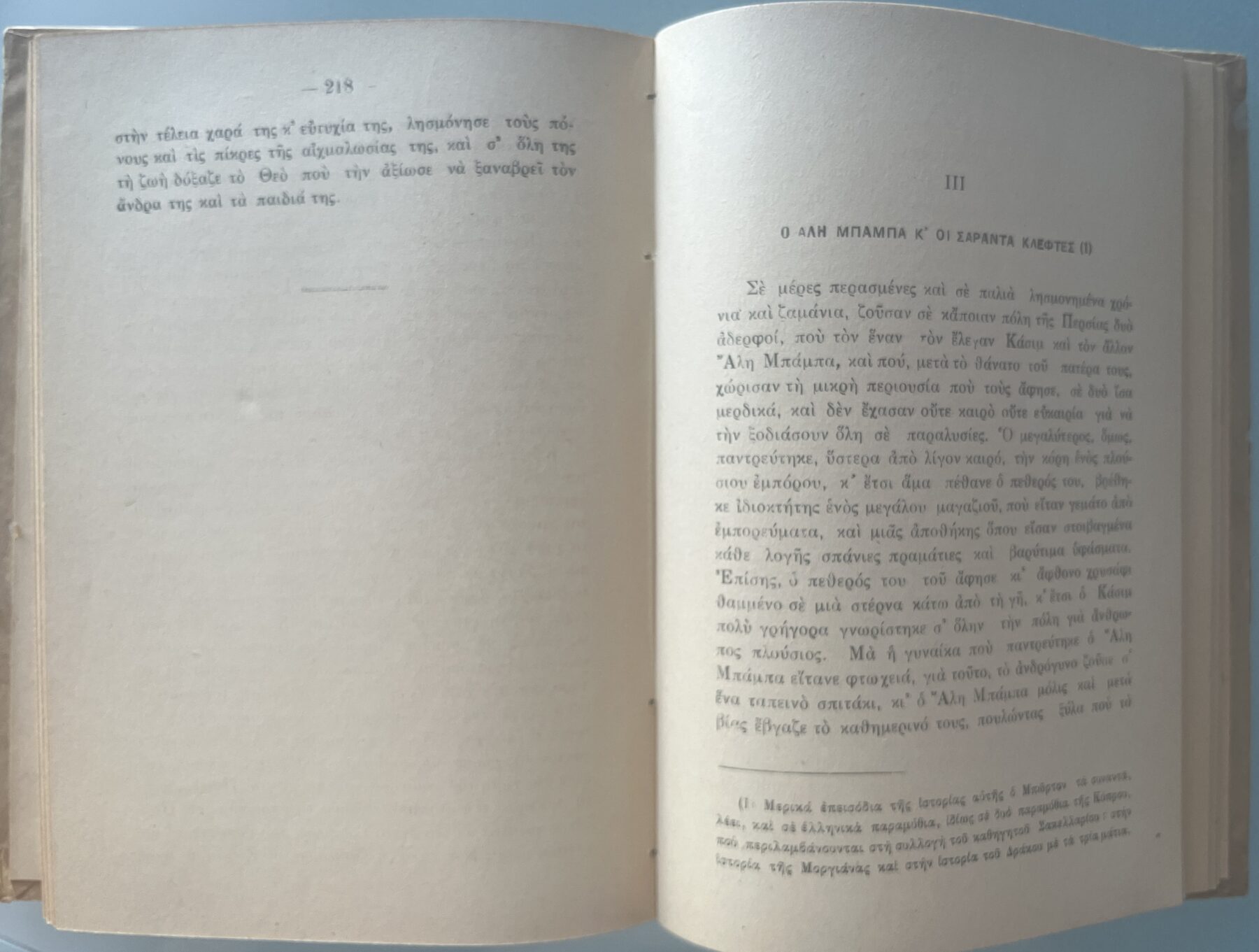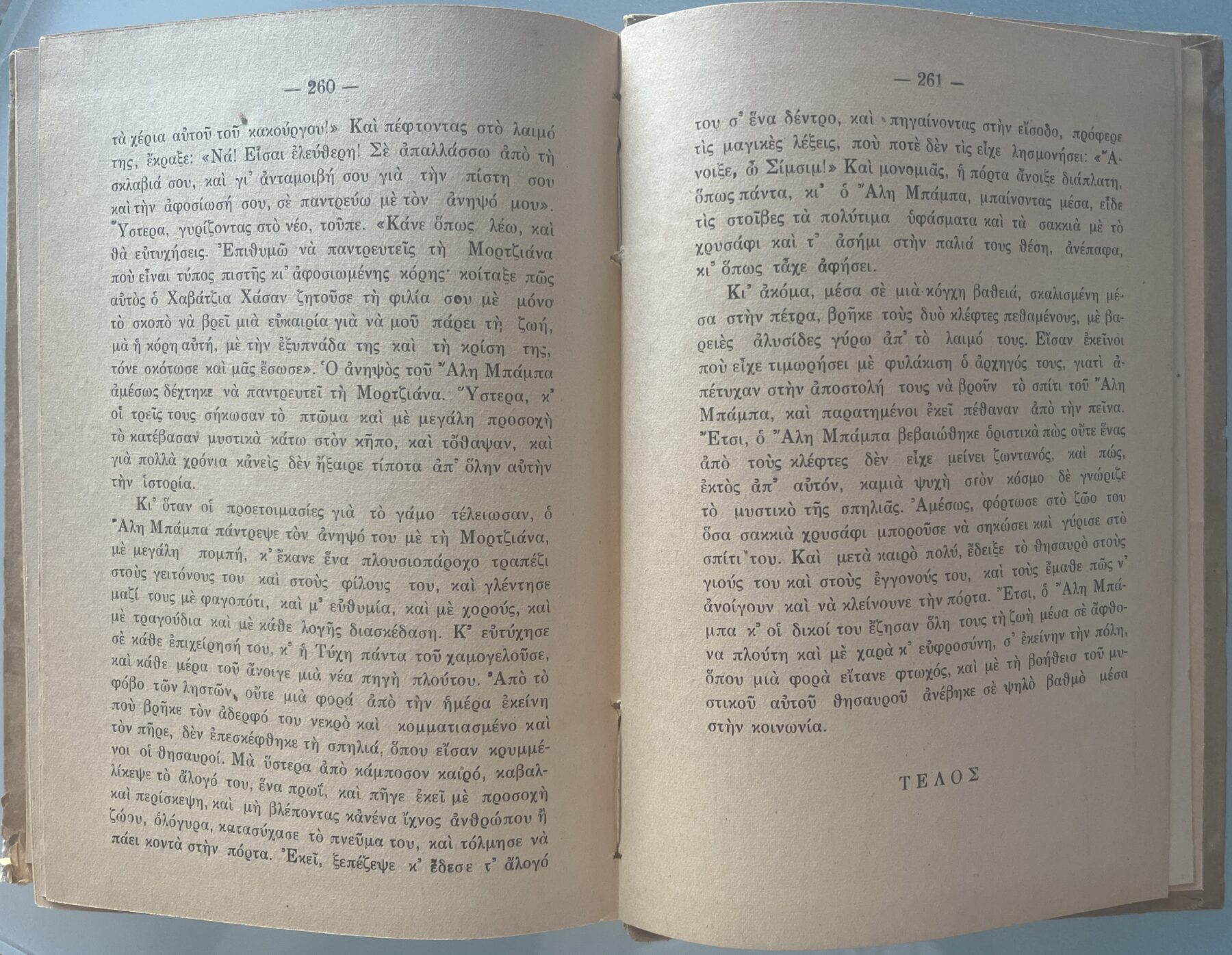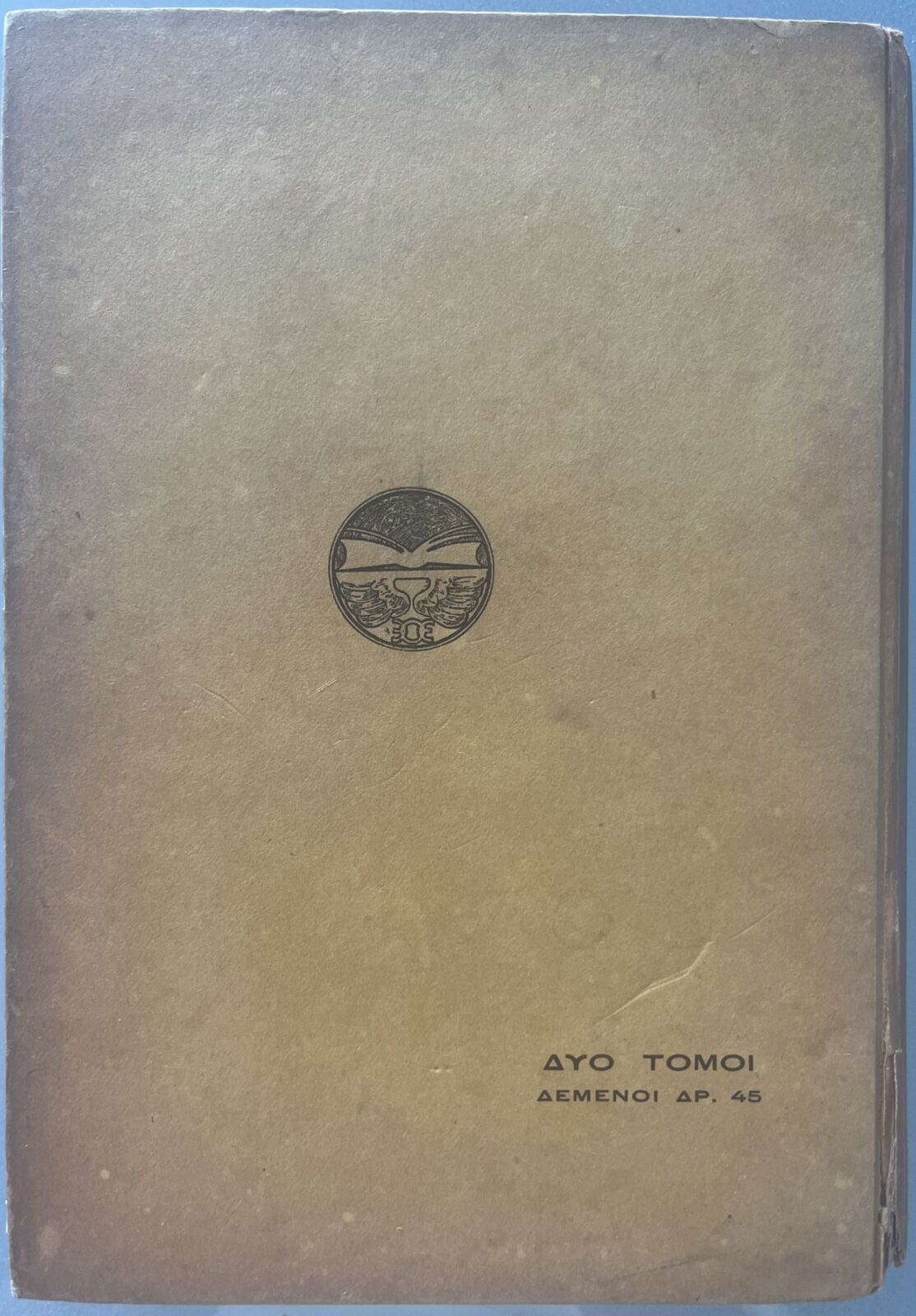1923, Halima i 1001 Nyktes, 2 Vol., K. Trikoglidis, 1001 Nights, Eleftheroudakis, Greek Translation
100.00€
Out of stock
Description
Χαλιμά
ή
1001 Νύκτες
Εις δύο τόμους
Μετάφραση από το αραβικό κείμενο
Λ. Τρικογλίδης
Halima (Sheherazade)
or
1001 Nights
Translated from the Arabic text
by
K. Trikoglidis
2 Volumes
Published by Eleftheroudakis Athens in 1923
12.5 cm x 18 cm
Volume 1, 294 pages
Volume 2, 261 pages
Original Hard Binding
The 1001 Nights is a collection of stories and fables from the Middle East and South Asia that were collected and rendered into Arabic during the Islamic Golden Age. The work was compiled over several centuries by various authors, translators and scholars throughout the Middle East, Central Asia and North Africa. The roots of the stories themselves can be traced back to ancient and medieval Arabic, Persian, Indian, Turkish, Egyptian and Mesopotamian tradition and literature. In particular, many stories come from the tradition of the Caliphate era while others come from Persia, having also introduced some Indian elements. What is common to all editions of the collection is the original background story with Shahriar (from the Persian word for “king” or “ruler”) and Sheherazade/Halima. Some editions contain only a few hundred stories/nights, while others contain 1,001 or more. Some stories, notably “Aladdin and the Magic Lamp”, “Ali Baba and the Forty Thieves” and “Sindbad the Sailor”, although they are almost genuine traditional Middle Eastern tales, were not part of the Arabic editions but were incorporated into the collection by Antoine Galland and other European translators. The “1001Nights” is one of the most popular works of Arabic literature in the Western world. It is noteworthy that the innovative and rich poetic discourse, chants, songs, laments, hymns, prayers, invocations, riddles and comments provided by the characters of the stories are unique to the Arabic version of the collection. Some are as short as one line, while others span dozens of lines.
In Greece, this collection became better known under the title Halima or Tales of Halima than the title given to the work in Egypt. During the 18th century, in Egypt this popular collection was circulated in book form containing only the central story, comprising four or five nights, and in which all the Persian names had been replaced by Arabic. Thus, the name of the heroine Sheherazade was replaced with the Arabic Halima bint Saad Al Ahiali, daughter of the revered Ahiali. In this Greek edition, the publisher preferred the Arabic name to fit better (as phonetic) for the Greek data and presented this collection with the heroine Halima.
The 1001 Nights is based on the central story of a Persian king, Shahriar, and his new bride, Sheherazade. The king is shocked when he discovers that his brother’s wife is unfaithful, and when he discovers that his own wife has also been unfaithful, and with a palace slave, he executes her. But his bitterness and sorrow were so great that he became a half-breed believing that all women are the same. So King Shahriar began to marry a virgin every day, which he executed the next morning so that she would not have the opportunity to dishonor him. Eventually the vizier, whose duty it was to find him virgins, could find no more brides for him. Sheherazade (from the Persian word for “of noble birth”), the vizier’s daughter, offers herself to be the next bride, and her father reluctantly accepts. On their wedding night, Scheherazade begins to tell the king a fairy tale, but leaves it unfinished. The king, wanting to hear the continuation and the end of the tale, is forced to postpone its execution. The next night, Scheherazade finishes telling the tale and immediately begins another, which she also leaves unfinished. The king, wanting to hear the sequel again, once again postpones Scheherazade’s execution, and this continues for 1,001 nights. On the last night, the king decides to spare her life forever and so Scheherazade remains queen.
Additional information
| Languages | Greek |
|---|

